Jamaican Oxtail
This deeply flavorful Jamaican stew is loaded with tender oxtail, butter beans, and broth-thickening dumplings.
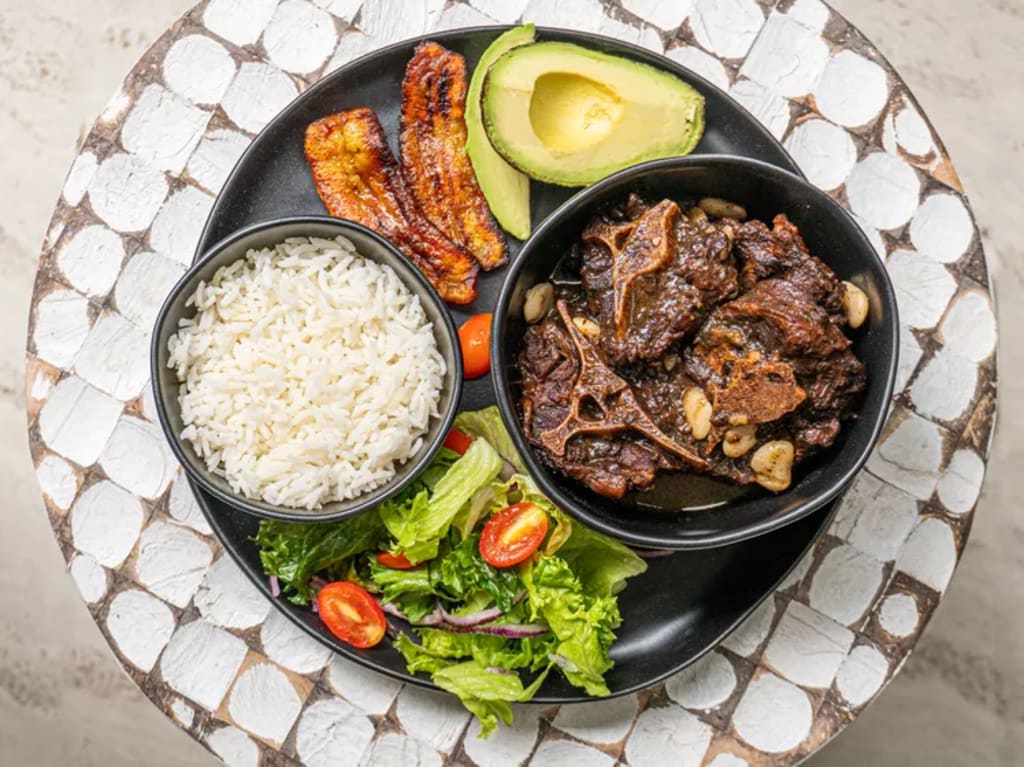
Adeeply satisfying stew with an incredibly rich and flavorful gravy, oxtail with broad beans has become a rare treat for many as the price of oxtail has gone up over time. Though it was once a weekly staple for weekend lunch or dinner, nowadays the lament is often that “the oxtail is too dear,” which essentially means that the cut of meat is far too expensive to buy regularly anymore. We fondly remember enjoying bowls of this stew when we were younger that were filled to the brim with butter beans, spinners, and, most importantly, big, thick, juicy oxtails with lots of meat. Sucking the gravy from the bone marrow is probably one of life’s most pleasurable activities. Served over white rice (it may be controversial, but we personally prefer it with rice and peas) with a side of avocado, ripe plantain, and salad or coleslaw, this is a meal that one wants to relish slowly and deliberately.
The History and Tradition of Jamaican Oxtail
The origin of stews like oxtail can be traced back to our colonial heritage. Enslaved Africans on plantations were given very meager amounts of protein and often had to make do with cheaper cuts of meat or ends of slaughtered animals to add protein to their diets. This is why so many Jamaican dishes have ingredients like pig’s tail, cow foot, chicken foot, tongue, and organs, like liver, tripe, etc. Jamaica does not have an extensive cattle-farming past; we have always had a stronger tradition of pig farming, which means that beef of any kind, and in particular fresh beef, would have been viewed as a rare treat indeed. The island was not known for its high quality meats; the intense heat and tropical climate meant that everything spoiled very quickly, and therefore, everything had to be cured, pickled, preserved, or stewed in brine. When an animal was slaughtered fresh, the tail, skin, hooves, and all the other parts that were of little use to wealthy plantation owners became delicacies for the workers who would preserve as much of the meat as possible for storage or sale, then prepare a shared feast with the rest.
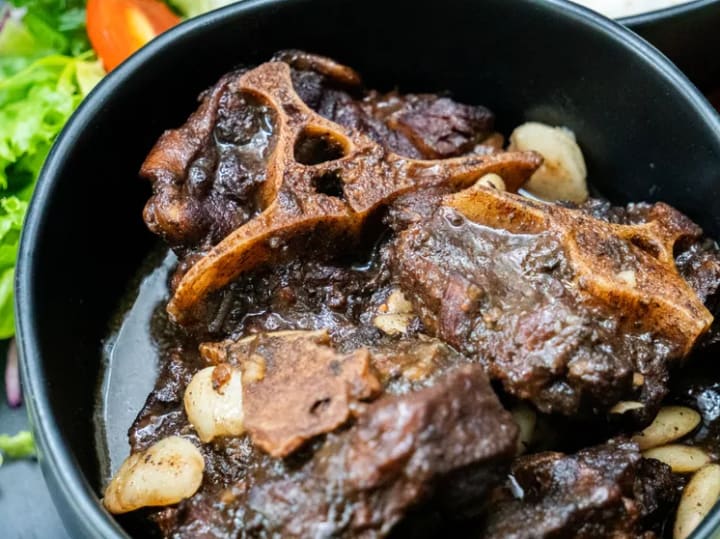
And so became the tradition of combining cheap cuts of bone-in protein with some vegetables, lots of aromatics and Scotch bonnet pepper, starch in the form of either spinners (dumplings), provisions, or root vegetables, and beans, pulses, or greens. Just like that, you had a one-pot, hearty meat stew like oxtail. In fact, it could almost be argued that while everyone thinks of curry goat as Jamaica's number one specialty, we believe oxtail actually outranks curry goat in popularity—it's just served in fewer places and more often found at home.
Technique: Transforming a Tough Cut of Meat
The key to transforming naturally tough and chewy oxtail into soft morsels of meat that readily slide off the bone is to braise it low and slow. This allows the vast amounts of collagen and connective tissue to slowly break down, rendering the oxtail tender and resulting in a broth thick with gelatin. We first sear the oxtail to create roasted depth of flavor via the Maillard reaction for our braise. It's important to brown the oxtail in batches to prevent overcrowding in the Dutch oven, which would cause the meat to steam instead of sear.
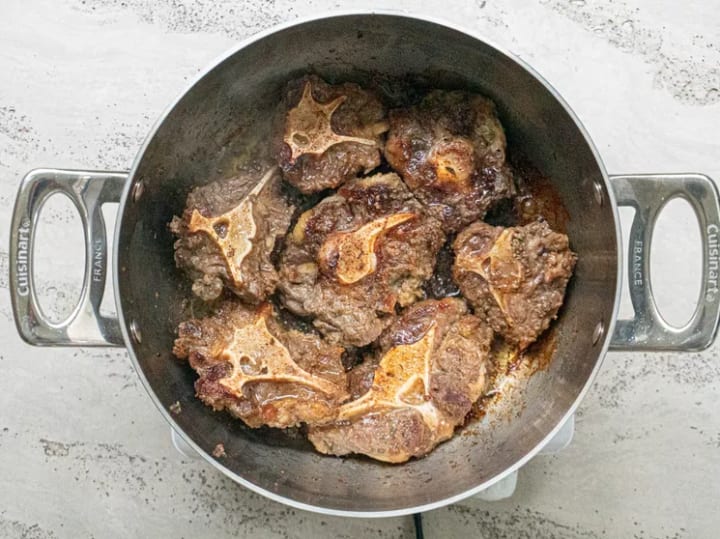
It's also crucial to remove excess marinade from the meat before searing, and to closely monitor and adjust the heat level while browning to prevent scorching. Deglazing with a small amount of water is essential for releasing all the flavorful browned bits from the Dutch oven so it can be incorporated into the braising liquid. Next, we gently simmer the aromatics and meat with the remaining water for close to three hours. All you have to do is monitor the pot from time to time to ensure that the temperature and the quantity of liquid is as it should be, just barely covering the meat.
A short aside here: while we use a fairly conventional braising method in our recipe here, we were taught a fascinating technique by a lovely lady who worked with us for a number of years that’s worth sharing. She had learned it from an elderly lady she once worked with. It is as follows: once the meat is in the pot, instead of adding water to cover (as we have in our recipe), one would cover the meat with a layer of ice. As the ice melts, becomes liquid in the pot, and steams away, more ice is gradually added throughout the cooking process. While the science behind this is not totally clear to us, we assume that if cooking over a live fire or high, hard-to-regulate heat source, which was more common in the past, the ice serves as a clever way to lower and regulate the cooking temperature in the pot, ensuring a simmer and not the vigorous boil that would make the meat tough and dry. In a sense, this re-creates the technique of braising at a well regulated temperature even if the heat source isn't easy to regulate.
Finishing Steps for a Perfect Final Texture
With the oxtail tender and the broth rich in flavor, we turn our focus to the spinners (dumplings) and beans. Do not undervalue these final components. While the spinners are optional, they add hearty sustenance and release starch to help further thicken and add body to the stew. The key to successfully shaping the dumplings—made of a simple mixture of flour, water, and salt—is to rest the dough for a short period of time after kneading. After vigorous mixing, the gluten in the dough needs time to relax so it can be rolled easily and hold its thin cylindrical shape before being added to the stew. As for the beans, we add them, along with the dumplings, during the final 30 minutes of cooking so they can cook up tender in the stew without turning to mush.
With a deliciously thick and rich gravy, well-prepared oxtail is a truly soul-satisfying meal that is well worth the effort and long hours required to make it.
Ingredients
For the Marinated Oxtail:
1/2 medium yellow onion, roughly chopped
3 scallions, root ends trimmed and cut into 2-inch segments
4 medium cloves garlic
1/2 Scotch bonnet pepper, stemmed, seeded, and chopped
3 pounds (1.4kg) oxtail
1 tablespoon (15ml) soy sauce
2 teaspoons Diamond Crystal kosher salt; for table salt, use half as much by volume
1 teaspoon freshly ground black pepper
1 tablespoon picked fresh thyme leaves
For the Oxtail Stew:
2 tablespoons (30ml) vegetable oil or other neutral oil, plus more as needed
1/2 medium yellow onion (about 4 ounces; 113g), cut into large chunks
1 scallion, root end trimmed and roughly chopped
4 medium cloves garlic, roughly chopped
10 sprigs fresh thyme
1 whole Scotch bonnet pepper, optional
1 tablespoon (15ml) browning, such as Grace brand, or soy sauce (see notes)
For the Spinners (Optional) and to Finish:
1 1/2 cups all-purpose flour (6 3/4 ounces; 191g)
Kosher salt
2 cans butter beans or broad beans, drained
1 tablespoon freshly ground black pepper
Cooked white rice or rice and peas, fried plantain, sliced avocado, and/or green salad, for serving
Directions
For the Marinated Oxtail: In a blender, combine onion, scallion, garlic, and Scotch bonnet with 1/2 cup (120ml) water and blend until thoroughly pureed. Rub oxtail all over with soy sauce, salt, pepper, and thyme. Transfer oxtail to a large bowl or large zipper-lock bag and pour blended aromatics on top. Mix well to coat, then cover bowl or seal bag, pushing out air as you go. Refrigerate for 24 hours.
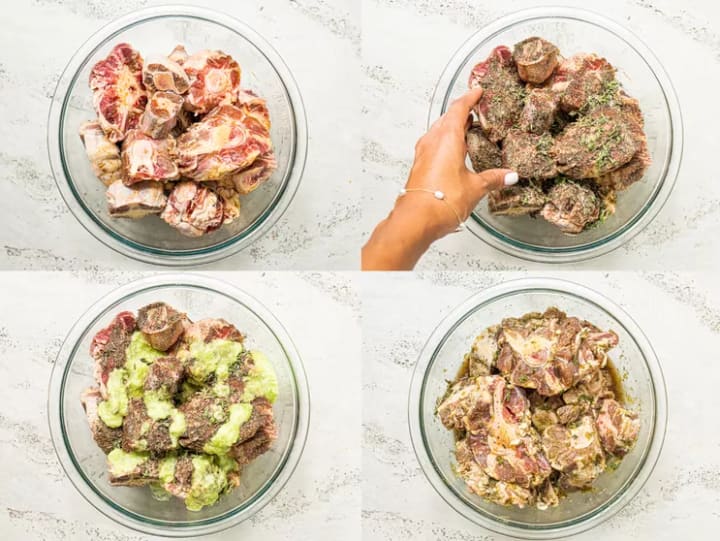
Remove oxtail from marinade and scrape off excess marinade. Reserve marinade for later use.
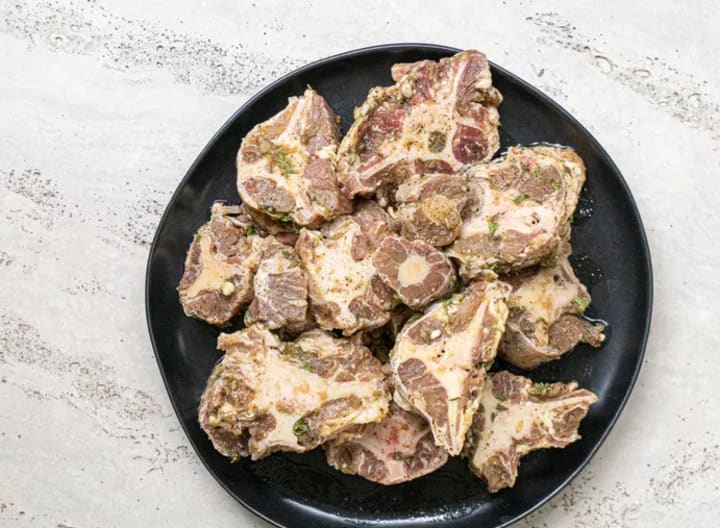
For the Stew: In a Dutch oven, heat oil over medium-high heat until shimmering. Working in batches to avoid crowding the pot, add oxtail and cook until browned all over, about 5 minutes per side (oxtail will brown more quickly and deeply due to the marinade, but turn down heat if it threatens to burn). Transfer oxtail to a platter and repeat with remaining oxtail, adding more oil to the pot if necessary.
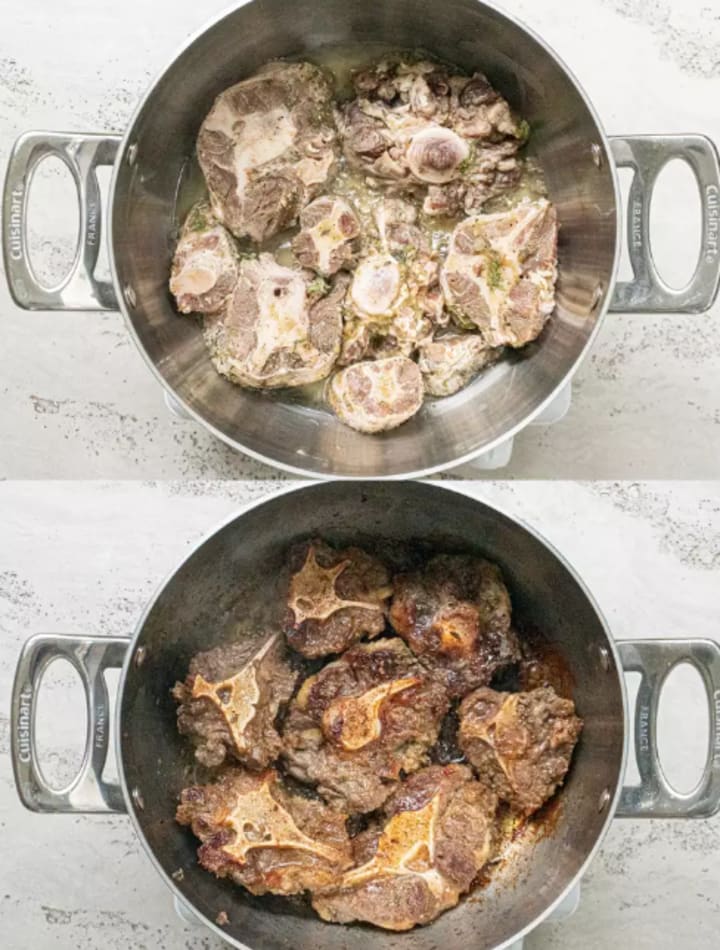
Add 1 cup (240ml) water to Dutch oven and bring to a simmer, scraping bottom of pot to remove any browned bits. Return oxtail and any juices to the pot.
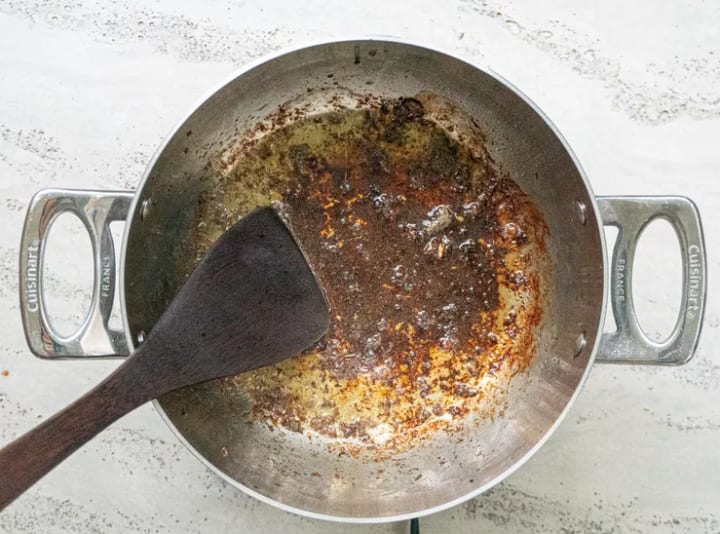
Add onions, scallion, garlic, thyme, Scotch bonnet pepper, and browning or soy sauce to oxtail. Add just enough water to cover meat, bring to a simmer, then reduce heat, cover, and let simmer for 40 minutes.
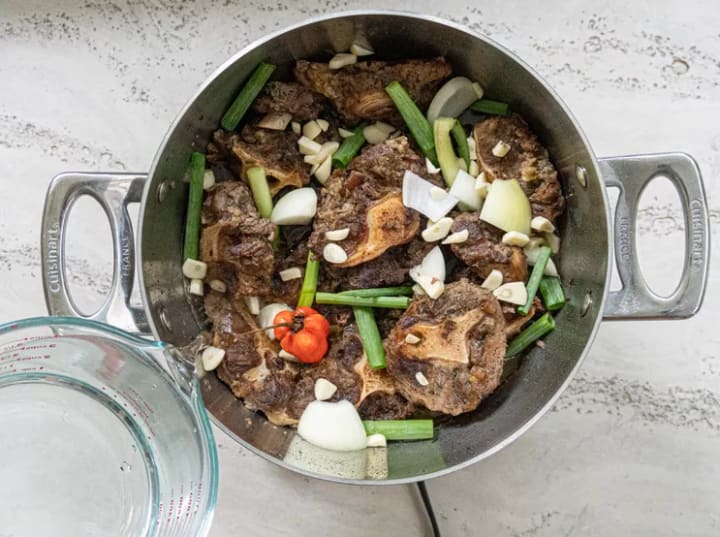
Add reserved oxtail marinade to pot and stir to combine. Continue to gently simmer, uncovered, adding a little water from time to time to ensure oxtail remains just barely covered, until oxtail is tender, about 2 hours.
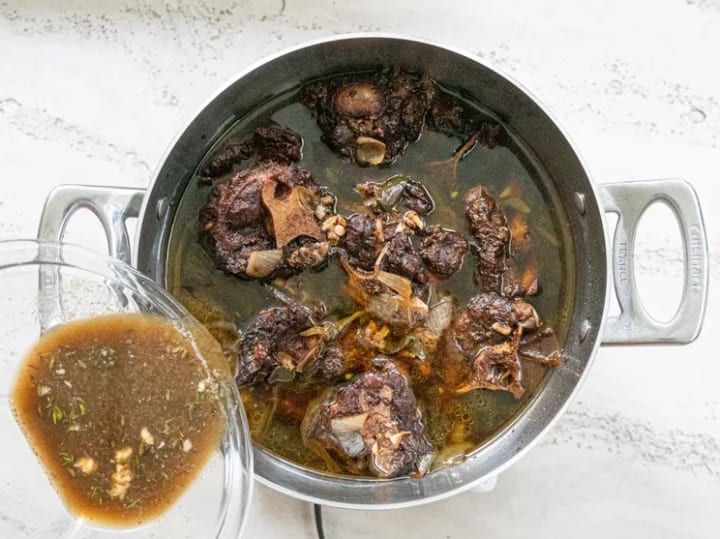
For the Spinners (Optional) and to Finish: If making spinners: In a small bowl, whisk together flour and a large pinch of salt. Add 1/2 cup (118ml) cold water and knead until a sticky dough ball forms. Cover and let rest 15 minutes. Tear off small pieces of dough and roll them into cigarette-sized strips. Stir into oxtail.
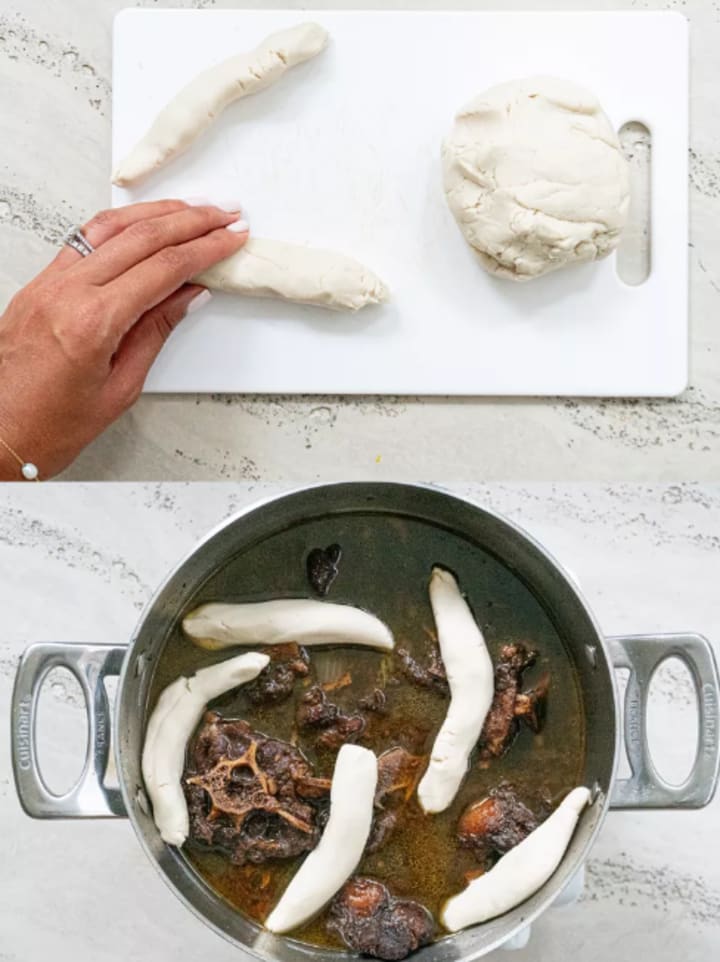
Stir in butter or broad beans and let simmer until stew is thickened, about 30 minutes. Remove thyme sprigs.
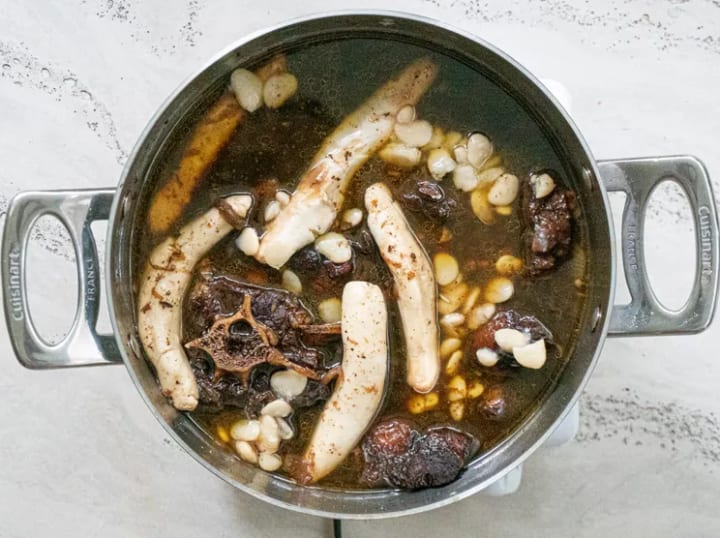
Add black pepper, season with salt, and serve with white rice or rice and peas, plantain, sliced avocado, and a nice fresh green salad.
Special Equipment
Dutch oven
Notes
Browning, the Jamaican kitchen pantry staple, is a sauce made of caramelized sugar and is used to lend color and scorchy-sweet-umami flavor to this recipe. You can use a bottled version of browning in this recipe, such as Grace brand. In a pinch, soy sauce may be substituted.
In Jamaica, the oxtails are small and the meat is not very thick on the bone. It can be quite tough, so many prefer to use a pressure cooker to prepare it. While our recipe does not require that, it is an option. If using a pressure cooker, reduce cooking time of oxtail by about 1 hour; seal the pressure cooker after adding marinade in Step 6 and bring to high pressure, then cook for 1 hour. Once pressure is released, oxtail should be tender and you can proceed with recipe as written.
Make-Ahead and Storage
The finished oxtail can be frozen for up to 2 months. To freeze, separate meat from liquid, then seal in an airtight container and freeze separately; to reheat, bring liquid to a boil and add frozen meat as needed. Adjust sauce with more liquid if necessary
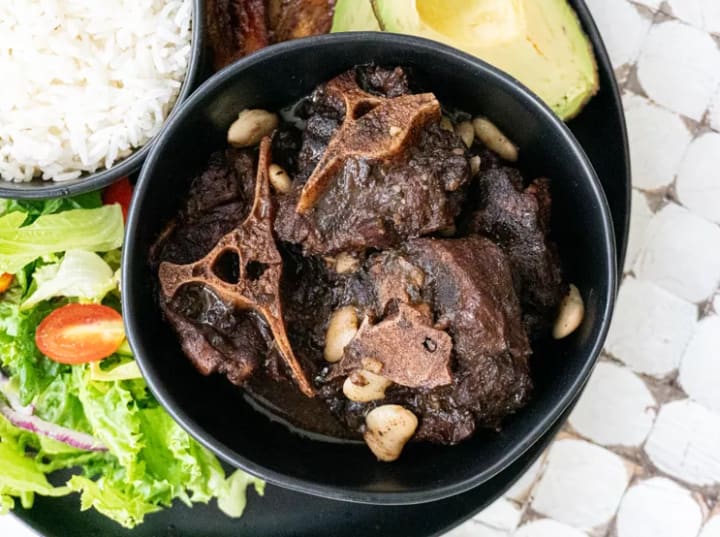
About the Creator
Enjoyed the story? Support the Creator.
Subscribe for free to receive all their stories in your feed. You could also pledge your support or give them a one-off tip, letting them know you appreciate their work.


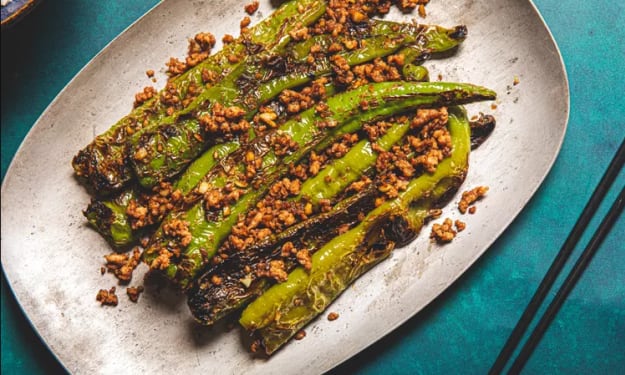



Comments
There are no comments for this story
Be the first to respond and start the conversation.